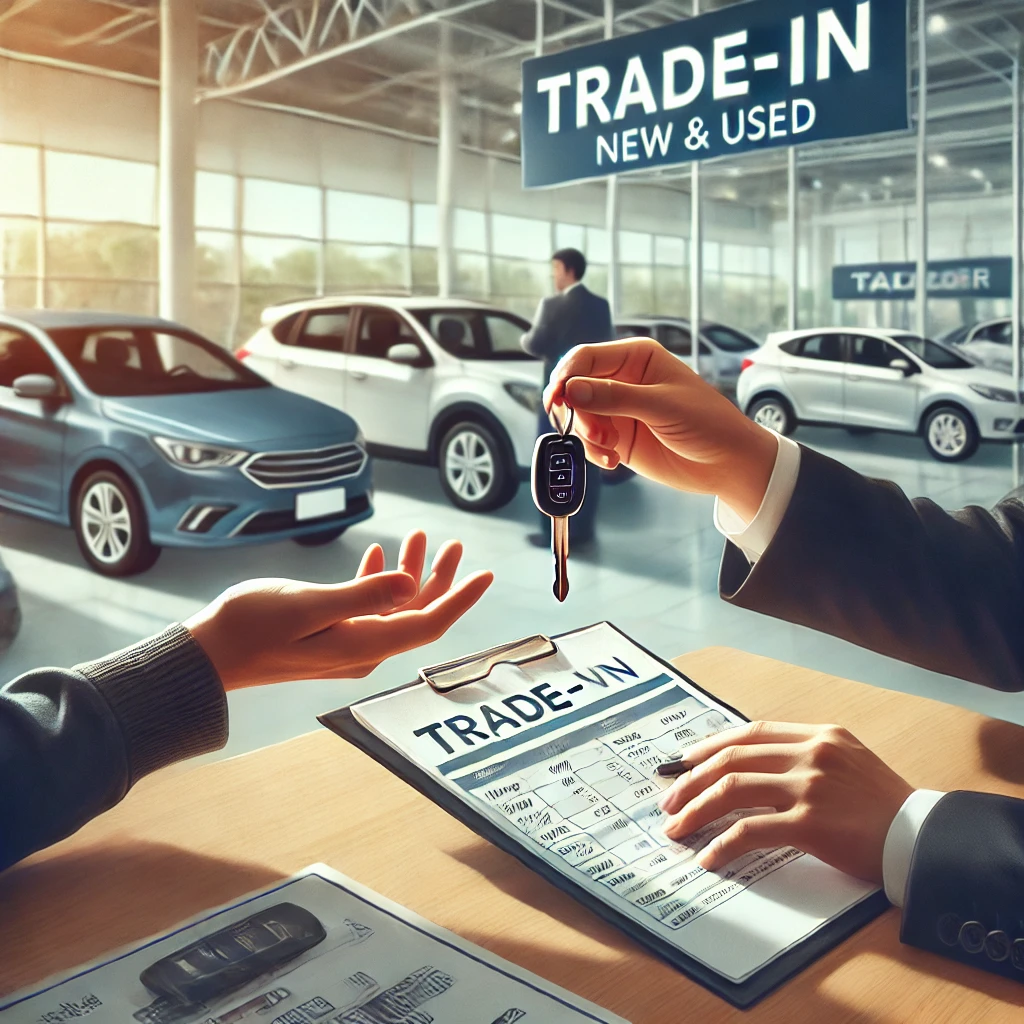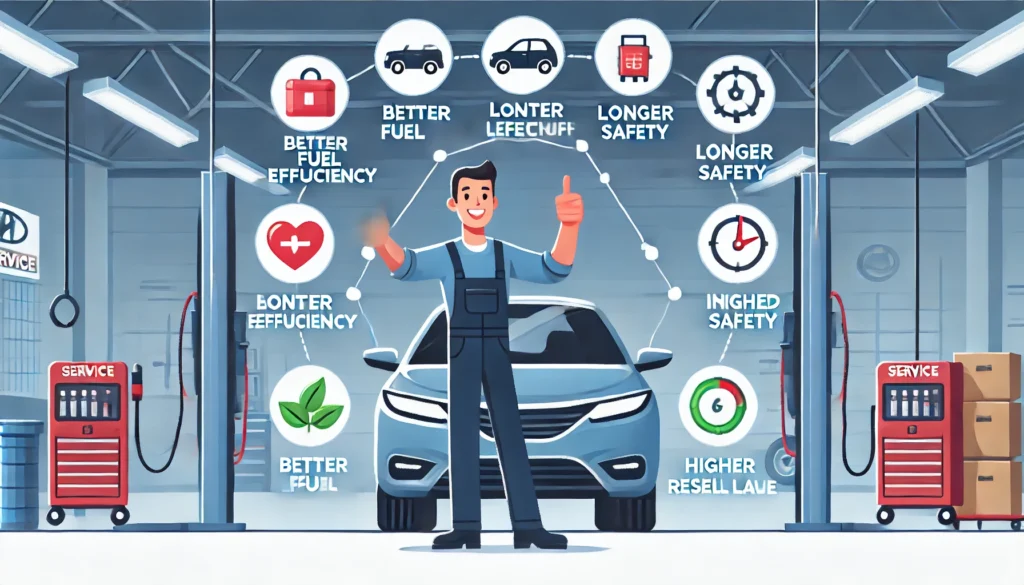Trading in your car can be a great way to get some money off your next vehicle purchase. However, it can also be a bit tricky to make sure you’re getting the best deal possible. This guide will help you understand how to trade in your car for the best value, step-by-step.
Understanding the Car Trade-In Process
When you trade in your car, you are essentially selling it to a dealership in exchange for credit towards a new vehicle. This can be a convenient option, but it’s important to know how the process works to avoid getting a bad deal.
Why Trade In Your Car?
Trading in your car can save you time and hassle. Instead of trying to sell your car privately, which can take weeks or even months, a trade-in allows you to quickly apply the value of your old car to a new one.
How Dealerships Determine Trade-In Value
Dealerships assess trade-in value based on several factors:
- Make and Model: Certain brands and models retain their value better than others.
- Age and Mileage: Newer cars with fewer miles typically have higher trade-in values.
- Condition: The overall condition, including exterior, interior, and mechanical state, greatly affects the value.
- Market Demand: Popular cars in high demand will fetch a better price.
- Accident History: Cars with a clean history report are more valuable.
Preparing Your Car for Trade-In
Before you take your car to the dealership, it’s important to make sure it looks its best. A well-presented car can fetch a higher trade-in value.
Clean Your Car Inside and Out
A clean car makes a better impression. Wash the exterior, vacuum the interior, and clean all the surfaces. Make sure your car smells nice too.
- Exterior Cleaning: Give your car a thorough wash and wax. Pay attention to the wheels and tires as well.
- Interior Detailing: Vacuum seats, carpets, and floor mats. Clean the dashboard, console, and all other surfaces. Use an air freshener to eliminate any odors.
Fix Minor Issues
Small repairs can make a big difference. Fix things like cracked windows, broken lights, and minor dents. If your car needs major repairs, weigh the cost of fixing them against the increase in trade-in value.
- Cosmetic Repairs: Address minor dents, scratches, and paint chips.
- Mechanical Fixes: Replace burned-out lights, fix minor engine issues, and ensure all systems (AC, heat, radio) are working.
- Tire Maintenance: Ensure tires are properly inflated and have enough tread.
Gathering Necessary Documents
Having all your paperwork ready can make the trade-in process smoother and faster.
Car Title
The title proves you own the car and have the right to sell it.
Maintenance Records
Showing that you’ve kept up with regular maintenance can increase your car’s value. Gather receipts and records of oil changes, tire rotations, and other services.
Additional Documents
- Vehicle Registration: Current registration shows the car is legally yours.
- Loan Payoff Information: If you still owe money on the car, bring details of your loan balance.
- Warranty Documents: If your car is still under warranty, provide these documents.
Researching Your Car’s Value
Knowing the value of your car is crucial to getting a good deal.
Use Online Valuation Tools
Websites like Kelley Blue Book and Edmunds can give you an estimate of your car’s value based on its make, model, year, mileage, and condition.
- Kelley Blue Book: Provides trade-in, private party, and retail values.
- Edmunds: Offers an appraisal tool that considers market trends.
- NADA Guides: Another resource for car values, often used by dealerships.
Check Local Listings
Look at similar cars for sale in your area to get an idea of what your car might be worth.
- Online Marketplaces: Sites like Craigslist, AutoTrader, and Cars.com.
- Local Dealership Websites: See what they’re asking for similar cars.
- Auction Sites: eBay Motors can provide insights into current market prices.
Consider Professional Appraisals
For a more accurate assessment, consider getting a professional appraisal.
- Dealership Appraisal: Some dealers offer appraisal services even if you’re not trading in.
- Independent Appraisers: Certified appraisers can provide an unbiased value.
Timing Your Trade-In
The time of year can affect the value of your trade-in.
Best Time to Trade In
Dealerships may offer better deals at the end of the month, quarter, or year when they’re trying to meet sales targets.
- End of the Month: Salespeople are looking to hit their quotas.
- End of the Year: Dealerships want to clear out inventory for new models.
- Holiday Sales Events: Special promotions can offer additional savings.
Seasonal Considerations
The type of car you have can also influence the best time to trade in. For example, convertibles may be worth more in the summer.
- Winter Vehicles: SUVs and trucks may have higher demand in the fall and winter.
- Summer Vehicles: Convertibles and sports cars might fetch more in the spring and summer.
- Tax Season: People often have extra cash from tax refunds, increasing demand.
Negotiating the Trade-In Offer
Don’t accept the first offer you get. Be prepared to negotiate.
Separate Trade-In and Purchase Negotiations
Negotiate your trade-in value separately from the price of your new car to avoid confusion and get a clearer picture of each deal.
- Get Multiple Quotes: Visit several dealerships to get different trade-in offers.
- Keep Transactions Separate: Discuss trade-in value before mentioning the new car purchase.
Use Your Research
Show the dealer the information you’ve gathered about your car’s value. Be firm but polite in your negotiations.
- Present Your Case: Use your research to justify your desired trade-in value.
- Be Prepared to Walk Away: If the dealer won’t budge, be ready to leave.
Understanding Dealership Tactics
Dealers may use certain tactics to get you to accept a lower offer. Knowing these can help you stay firm.
Low Initial Offers
Dealers might start with a low offer to see if you’ll accept it. Be prepared to counter with your research-backed value.
- Anchoring: The initial low offer sets a baseline for negotiations.
- Counter Offers: Respond with your desired price backed by data.
Bundling Deals
Some dealers might offer a higher trade-in value if you agree to a higher purchase price on the new car. Make sure you’re getting a fair deal overall.
- Separate Deals: Ensure each part of the transaction stands alone.
- Total Cost Consideration: Focus on the overall deal, not just the trade-in value.
Exploring Other Options
If you’re not happy with the trade-in offer, consider other options.
Selling Privately
You might get more money selling your car privately, but it will take more time and effort.
- Prepare Your Car: Clean and fix minor issues as you would for a trade-in.
- Advertise Effectively: Use online marketplaces and social media.
- Meet Safely: Arrange to meet potential buyers in safe, public places.
Car Buying Services
Some services, like CarMax, will buy your car for cash. This can be a quick and easy option.
- Instant Offers: Get a quote online or in person.
- No-Hassle Process: These services handle paperwork and payment.
- Compare Offers: Get quotes from multiple services to ensure a fair price.
Donation
If your car isn’t worth much, consider donating it to a charity. You might qualify for a tax deduction.
- Find a Reputable Charity: Make sure it’s a legitimate 501(c)(3) organization.
- Understand Tax Benefits: Consult a tax advisor to understand potential deductions.
- Prepare the Car: Clean it and gather necessary documents.
Finalizing the Trade-In
Once you’ve agreed on a trade-in value, there are a few final steps to complete the process.
Transfer the Title
Sign over the title to the dealership. Make sure to remove your license plates and cancel your insurance on the old car.
- Fill Out Title Transfer Forms: Complete the necessary sections on the title.
- Notify the DMV: Inform your local Department of Motor Vehicles about the sale.
Get a Written Agreement
Make sure you get the trade-in offer in writing as part of your new car purchase agreement.
- Review the Contract: Ensure all details are correct and as agreed upon.
- Understand All Terms: Clarify any parts of the contract you don’t understand.
Remove Personal Items
Before handing over your car, make sure you’ve removed all personal belongings.
- Check Everywhere: Look in the glove box, under seats, and in the trunk.
- Reset Systems: Clear personal data from the car’s navigation and infotainment systems.
FAQs
What documents do I need to trade in my car?
You’ll need the car title, maintenance records, and your driver’s license. It’s also a good idea to bring your current registration and any loan payoff information if applicable.
Can I trade in a car that still has a loan?
Yes, you can trade in a car that still has a loan. The dealer will pay off the remaining loan balance and apply any remaining value to your new purchase. If you owe more than the car is worth, the difference will be added to your new loan.
Will I get more money trading in or selling privately?
You’ll usually get more money selling privately, but it takes more time and effort. Trading in is faster and more convenient, but you might get less money.
How can I increase my car’s trade-in value?
Clean your car thoroughly, fix minor issues, and gather all maintenance records. Present your car in the best possible condition and do your research to know its value.
Can I negotiate the trade-in value?
Yes, you can and should negotiate the trade-in value. Use your research to support your case and be prepared to counter the dealer’s initial offer.
What if I’m not happy with the trade-in offer?
If you’re not satisfied with the trade-in offer, you can try another dealership, sell your car privately, or use a car buying service. You don’t have to accept the first offer you get.
Conclusion
Trading in your car can be a smart and convenient way to get a new vehicle, but it’s important to be prepared and knowledgeable to get the best value. By cleaning your car, fixing minor issues, gathering necessary documents, researching your car’s value, timing your trade-in, and negotiating effectively, you can ensure you get the best deal possible. If you’re not happy with the trade-in offer, explore other options like selling privately or using a car buying service. With these tips, you’ll be well-equipped to trade in your car and drive away in your new one with confidence.


